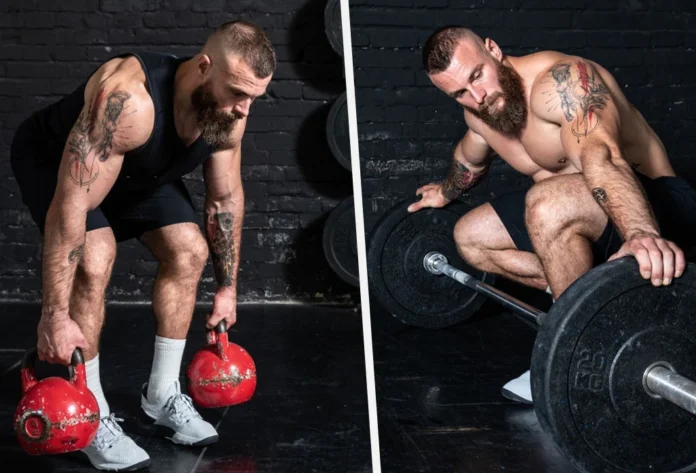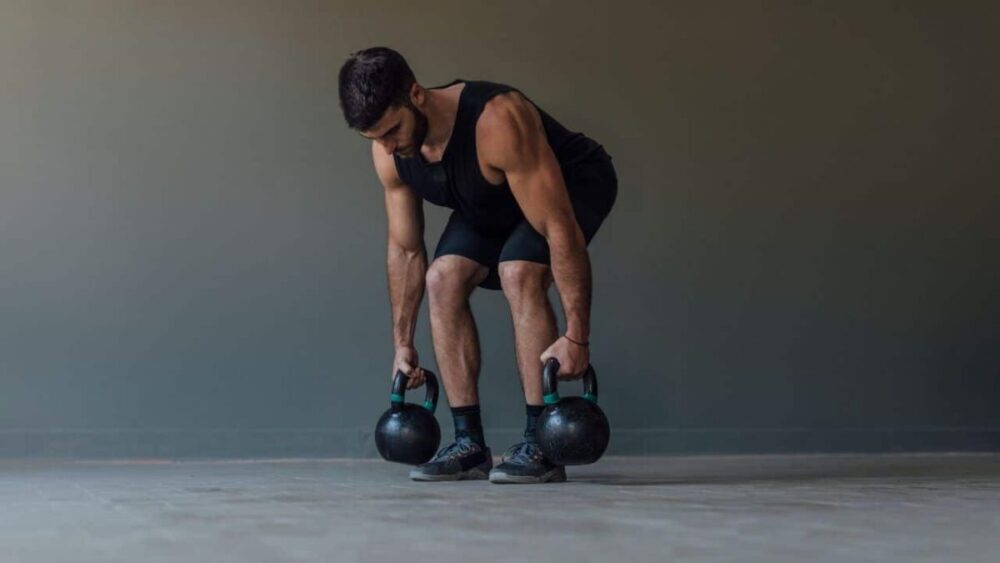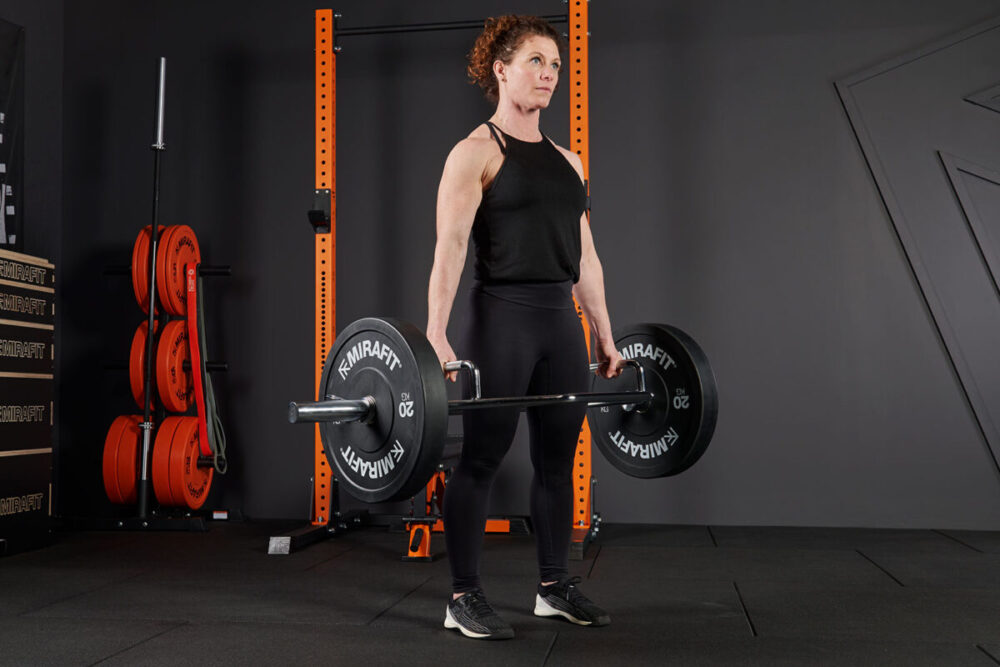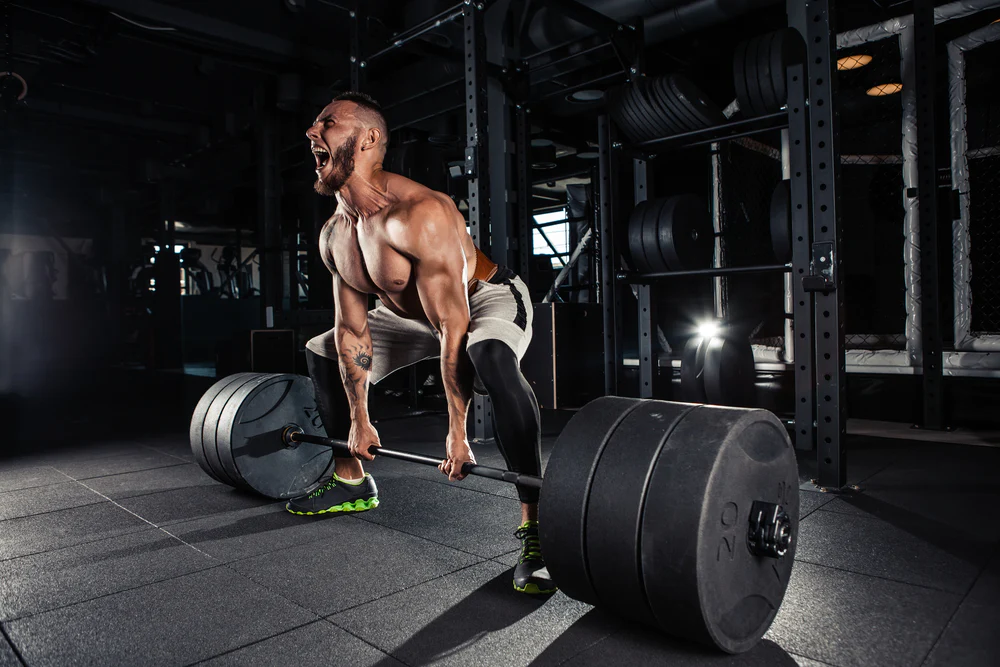
Hey there, lifting buddy! Let’s chat about deadlifts for a second. If you’ve ever thought, “Hmm, should I go for a kettlebell or stick to the trusty barbell for my deadlifts today?” you’re in the right spot. Whether you’re here for bulging muscles, mighty strength, or just aiming to be the healthiest version of yourself, deadlifting is your friendly neighborhood exercise.
But here’s the big question: kettlebell deadlift vs. barbell – which one should you pick? Let’s break it down and see which might become your new workout buddy.
Pros and Cons of the Kettlebell Deadlift

The Kettlebell Deadlift is a popular variation of the traditional deadlift exercise, using kettlebells instead of barbells. While it offers several benefits, it also has some limitations. Let’s explore the pros and cons of the Kettlebell Deadlift:
Pros:
Accessibility and Affordability
Kettlebells are readily available in most gyms. They are relatively affordable for home use, making this exercise accessible to many.
Enhanced Grip Strength
Kettlebell Deadlifts require a firm grip, as the unique shape of the kettlebell’s handle challenges your grip strength more than a traditional barbell. This can help improve your overall hand and forearm strength.
Versatility
Kettlebells are versatile tools that may be used for various exercises, such as swings and Turkish get-ups. Incorporating Kettlebell Deadlifts into your routine allows for diversity in your workouts.
Cons:
Limited Load Capacity
A big downside of the Kettlebell Deadlift is that it can only handle heavy weights. Kettlebells usually don’t go as heavy as barbells, so if you want to lift heavy, you might run out of options at the gym pretty fast.
Less Lower Back Activation
Kettlebell Deadlift is easier on the lower back, making it a good choice for those with back issues. But the traditional barbell deadlift is better if you want to focus on building lower back muscles.
Reduced Overall Muscle Recruitment
The Kettlebell Deadlift may engage fewer muscles than the barbell deadlift. It emphasizes the legs and grip strength more, involving fewer muscles in the upper body and back. If your goal is overall muscle development, this could be a limitation.
Pros and Cons of the Barbell Deadlift

The Barbell Deadlift is a classic strength training exercise that has been a staple in powerlifting and bodybuilding routines for decades. It offers numerous benefits but also comes with its own set of challenges. Here are the pros and cons of the Barbell Deadlift:
Pros:
Superior Strength and Muscle Gains
The Barbell Deadlift is renowned for its ability to build raw strength and promote muscle development. It engages various muscle groups, including the legs, lower back, upper back, glutes, and forearms. This comprehensive muscle activation can lead to substantial strength and size gains.
Progressive Overload
With barbells, you can easily add more weight as you progress. This allows for the principle of progressive overload, a critical factor in muscle and strength development. You can continually challenge yourself by increasing the weight lifted.
Full-Body Engagement
The Barbell Deadlift is often called a full-body exercise because it simultaneously engages multiple muscle groups. It builds strength and improves posture and stability by targeting the core muscles.
Functional Strength
The movement pattern in the Barbell Deadlift closely mimics real-life activities like lifting heavy objects off the ground. This makes it an excellent exercise for improving everyday functional strength.
Cons:
Equipment and Space Requirements
You need access to a barbell, weight plates, and a suitable lifting platform to perform Barbell Deadlifts. This can be a limitation if you work out at home or in a gym with limited equipment.
Greater Injury Risk
Deadlifts, when performed with improper form or excessive weight, can pose a higher risk of injury, particularly to the lower back. Prioritizing proper technique and starting with manageable weights is crucial to reduce this risk.
Learning Curve
Mastering the correct form for the Barbell Deadlift can be challenging, especially for beginners. It requires learning proper hip hinge mechanics, maintaining a neutral spine, and developing adequate strength and flexibility in various muscle groups.
Intensity and Fatigue
Due to the high level of muscle engagement, Barbell Deadlifts can be highly demanding and exhausting. This can limit their frequency in a workout routine, as you may need more time to recover between sessions.
Choosing the Right Deadlift Variation

Choosing the suitable deadlift variation for your fitness goals and individual circumstances is a crucial decision. Whether you opt for the Kettlebell Deadlift, the Barbell Deadlift, or both depends on various factors. Here’s a guide to help you make an informed choice:
Identify Your Fitness Goals
- Strength and Power: If your primary objective is to build maximal strength and power, the Barbell Deadlift is often the superior choice due to its ability to handle heavier loads and engage more muscle groups. It’s a staple exercise in powerlifting for a reason.
- Muscle Building (Hypertrophy): Both variations can contribute to muscle growth. Still, the Barbell Deadlift’s higher load capacity may be more effective for hypertrophy if you maintain proper form. However, the Kettlebell Deadlift can still be a valuable accessory exercise.
- Functional Fitness: Both variations can benefit if you aim for functional strength that translates to everyday activities. The Kettlebell Deadlift’s emphasis on grip strength and stability can have practical applications.
Assess Your Current Fitness Level
- Beginners: If you’re new to deadlifting or strength training, starting with the Kettlebell Deadlift is a good idea. It’s easier to learn, places less stress on the lower back, and helps develop proper lifting mechanics.
- Intermediate and Advanced Lifters: As you become more experienced and build a solid foundation, you can gradually incorporate the Barbell Deadlift. Make sure to prioritize proper form and gradually increase the weight.
Consider Your Equipment and Space
- Home Gym: If you have limited space or equipment at home, the Kettlebell Deadlift may be a more practical choice since it requires less space and minimal equipment.
- Access to a Gym: If you have access to a gym with barbells and plates, you have the option to incorporate both variations into your routine. You can use the Barbell Deadlift as a primary strength builder and the Kettlebell Deadlift as an accessory exercise.
Wrap up
The kettlebell is super versatile, great for grip strength, and beginner-friendly. The barbell is a powerhouse for muscle and strength gains, perfect for those with more lifting experience. Whichever you choose, remember to keep it safe and fun. Fitness is a marathon, not a sprint!








